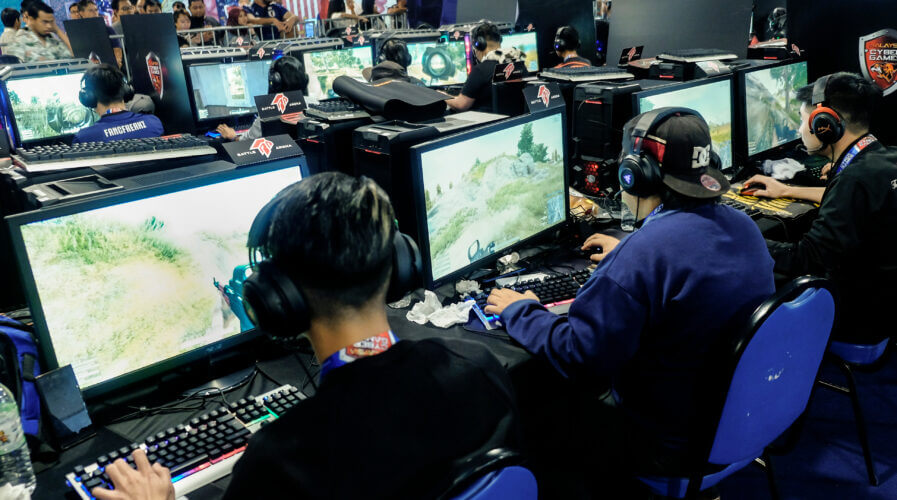
(Source – Shutterstock)
Learning through Gaming – Integrating E-sports into the Classroom
Article by Joel Mulpeter, Director of Product – Asia, Crestron
Technology is the new normal in the classroom – thanks to the mainstream adoption of hybrid and remote learning accelerated by the pandemic. The use of collaborative AV infrastructure has been a huge boon for the educational industry, enabling students and educators to connect effectively in ways not possible earlier.
One of the unconventional areas where technology has benefited educators is sports or rather e-sports. Educators are increasingly recognizing the benefits of including e-sports in the curriculum, especially since it is appealing to the younger generation of students. They can capitalize on the vast benefits of e-sports by leveraging technology to value-add to existing school campuses to house e-sports events and adopting these technological spaces for the purpose of recruiting, retention, community-building, varsity sports, and even academic-related activities.
What is E-sports?
A category that goes beyond traditional games such as football, basketball, and hockey, e-sports comprises a wide range of games, with some notable examples being Call of Duty, League of Legends, and Mobile Legends. Played as a virtual sport, e-sports has competitive tournaments all over the world that are also held in physical sports arenas. These physical arenas must be equipped with tech infrastructure and integrated into the learning systems. The rising popularity of e-sports has led to the emergence of e-sports areas on various university campuses even in Asian countries. For instance, in the Philippines, Tier One Entertainment partnered with Philippines University for its gaming and e-sports program – an example of how e-sports has integrated with the education sector.
So, how are e-sports competitions played? Taking the form of multiplayer or individual tournament challenges, players will require keyboards, mouses, and joystick controls along with integrated audio-visual technology to participate in e-sport challenges. With a favorable environment for e-sports, students of all backgrounds will be able to have a chance to participate.

Joel Mulpeter, Director of Product – Asia, Crestron
The benefits of incorporating E-sports in the education sector
Integrating e-sports into the education sector is highly favorable for both educators and students. Firstly, since e-sports is primarily a digital sport, everyone is granted equal opportunities to participate if they are inclined to be part of the tournaments. This levels the tournament ground and opens e-sports to a larger pool of candidates. Apart from this, e-sports fans from all around the world can view the tournaments as well.
With the popularization of e-sports in college, educators can use this opportunity to attract potential students. Since e-sports is popular amongst the younger generation, prospective students would be enticed to visit campus open houses if there are labs and arenas that are dedicated to e-sports tournaments. Educators can also use e-sports as a tool for career consultations, as they can leverage students’ interests to guide them toward e-sports-related professions, such as game developers, technology management, and other STEM-centric fields. Schools could also grant students the opportunity to hone skills that will benefit their performances in e-sports challenges.
How schools can support e-sports in the education sector
To accommodate e-sports in schools, universities must ensure that their facilities are suitable for e-sports. For example, they should build on the technology infrastructure of computer labs, training venues, and competition venues with high–integrity imagery, solid audio, quick refresh rates, scalable solutions, and proper lighting. This way, the environment would be desirable for universities to adopt e-sports as part of the education system.
Schools’ investments in AV infrastructure could entail future technological developments, such as XR labs. These will grant students a once-in-a-lifetime opportunity to try out and gain exposure to such valuable technologies. For example, in Singapore, the Ministry of Education shared that some schools like SUTD run a gaming research center named Gaming Lab. The Lab empowers students to develop cutting-edge skills and expertise in gaming design in the field of AI, education, healthcare, and AR and VR technologies.
Complete immersion of e-sports into education programs remains a work in progress. However, with e-sports gaining traction in the education sector, universities with e-sports programs will be able to leverage its popularity and further help universities with their student recruitment process. As students join an e-sports program in universities, their subsequent success in e-sports will elevate and build awareness around the benefits of integrating them into education programs as well. In a nutshell, this novel and innovative way of educating the younger generation is a testament to the potential of technology and the pertinent role it plays in education for the future.
READ MORE
- Strategies for Democratizing GenAI
- The criticality of endpoint management in cybersecurity and operations
- Ethical AI: The renewed importance of safeguarding data and customer privacy in Generative AI applications
- How Japan balances AI-driven opportunities with cybersecurity needs
- Deploying SASE: Benchmarking your approach


